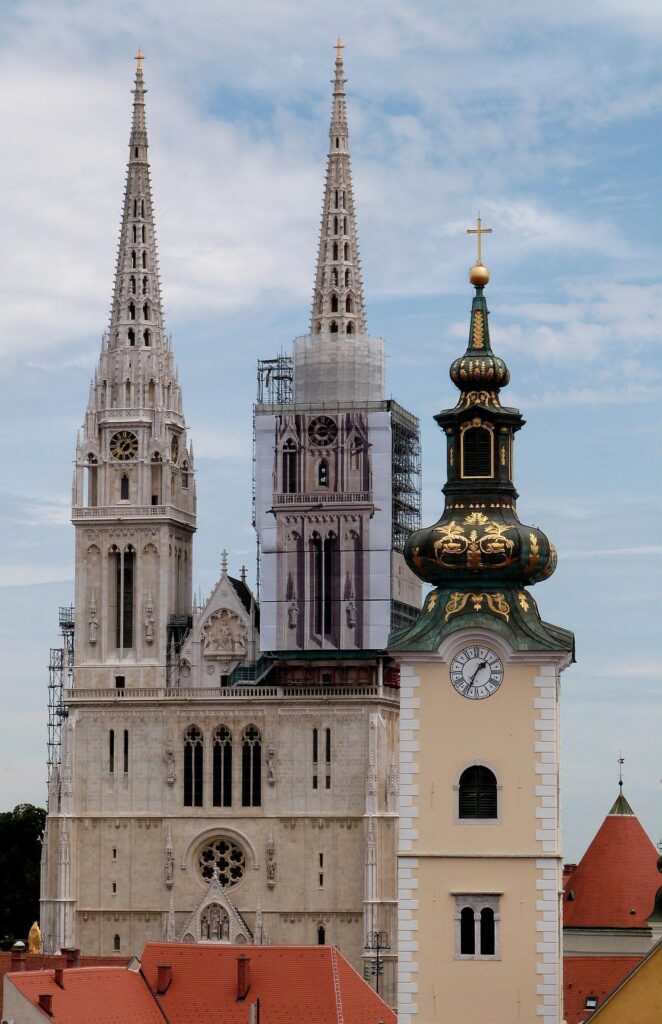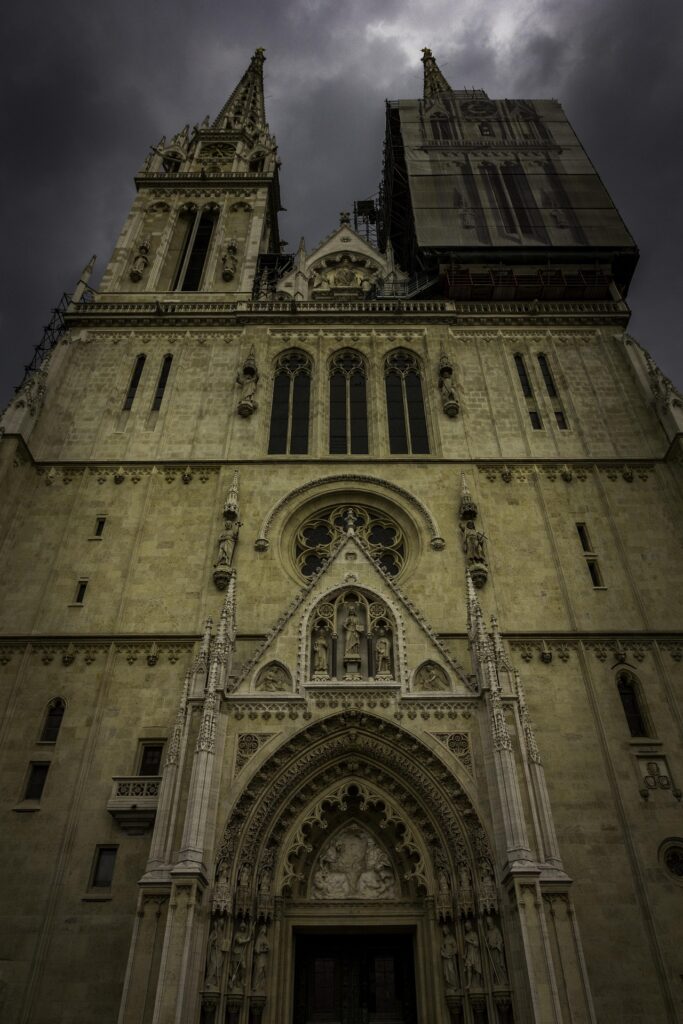September the 29th, 2025 – Have you ever noticed that Zagreb Cathedral always shows 7:03? The beautiful building in the heart of the Croatian capital hides some truly fascinating stories.
As Putni kofer/Ivana Vasarevic writes, the beauty of the Croatian capital is increasingly being discovered by tourists from all over the world. Of course, for most of them, the main attraction in the entire city is Zagreb’s Cathedral of the Assumption of the Blessed Virgin Mary, which dominates Kaptol Square and is considered the most monumental sacral building made in the neo-Gothic style southeast of the Alps. It was originally known as the Cathedral of St. Stephen, and today it’s dedicated to the Assumption of Mary and the kings St. Stephen and St. Ladislaus (Ladislav).
an earthquake victim – more than once!

It is enclosed on three sides by the Archbishop’s Palace, and is also adorned with two striking towers. The northern bell tower was 104 metres high, and the southern one was 105, while with metal crosses on top, it reached 108 metres in height. However, after the March 2020 earthquake, these parts were removed, rendering the towers about 92 metres high. The Zagreb Cathedral dates back to the end of the 11th century, when the Hungarian King Ladislaus founded the Zagreb Diocese. With its founding, Kaptol, one of the two medieval settlements from which Zagreb later emerged, is also mentioned for the first time.
After the founding of the diocese, King Ladislaus most likely didn’t actually build a new church, but designated the existing one from the 10th or 11th century as the city’s cathedral. The construction process of the new cathedral began after his death, probably after 1102, and went on for over 100 years. The cathedral was consecrated in 1217, when King Andrew II set off on the Fifth Crusade.
the devastating tatar raids…

Zagreb Cathedral was severely damaged during the Tatar raids of 1242. Only the sacristy and remains that show that it was built in the transitional Romanesque style have been preserved. After the Tatar raids, Bishop Stephen II had the chapel of St. Stephen the First Martyr built. This Romanesque-Gothic building is built into the complex of the archbishop’s palace, and can still be seen today.
The new Gothic-style Zagreb Cathedral, built on the remains of the previous pre-Tatar cathedral, was dedicated by Bishop Timotej to St. Stephen, the Hungarian king. The sanctuary and sacristy that were constructed back at that time have been preserved to this day. In the second half of the 15th century, during the reign of Bishop Osvald Thuz, the entire building was roofed and construction of the bell tower on the southern side of the facade began.
With the proper establishment of the Zagreb Diocese, its Treasury was also established, which still houses priceless items, including items dating from the 11th to the 19th centuries. One of them is the Felician Charter from 1134, the oldest document between the Sava and Drava rivers, which mentions the founding of the Zagreb Diocese.
natural disasters have always plagued zagreb cathedral

The first major fire at Zagreb Cathedral occurred back in 1624, caused by lightning that set fire to its roof. The famous main altar of Bishop Osvald from 1489 tragically burned down as a result. A second major fire in 1645 also caused enormous damage, and an earthquake measuring 6.3 on the Richter scale with its epicentre registered in the Medvednica area in 1880 caused the vaults in the sanctuary and choir to collapse. That same event also damaged the bell tower, and the floor was also broken through, completely crushing the altars.
Zagreb Cathedral was thoroughly renovated in the neo-Gothic style according to the designs of the architect Friedrich Schmidt and under the leadership of Hermann Bollé. The beautiful interior was enriched, among other things, with valuable inventory, Baroque altars made of wood and marble, and a pulpit by the sculptor Mihael Cussa. In 1855, a large organ was also purchased, made by the Walcker company from Ludwigsburg, Germany.
7:03 – the moment the earthquake of 1880 struck zagreb

In addition, the Croatian cardinal and Archbishop of Zagreb, Juraj Haulik, had the windows of the sanctuary painted, which are also the oldest stained glass windows in all of Croatia. When you exit the cathedral, on its right side you’ll notice a stopped clock. The time on it always reads 7:03 and refers to the fateful moment when the earthquake hit Zagreb in 1880.
The gorgeous Zagreb Cathedral is also the final resting place of some of the most important Croatian heroes and martyrs, including Fran Krsto Frankopan, Franjo Kuharić, Alojzije Stepinac, Ivan Antun Zrinski and Petar Zrinski. In 1994, it was visited by Pope John Paul II, and in June 2011 by Pope Benedict XVI.
Much more recently, in March 2020, yet another very serious earthquake measuring 5.5 on the Richter scale with its epicentre in Markuševac collapsed the stone top of the southern tower, on which a gilded cross with a lightning rod spike was attached. The first mass after the earthquake was held on Christmas Eve, December the 24th, 2020, and was led by is the Archbishop of Zagreb, Cardinal Josip Bozanić.
Subscribe to our newsletter
the fields marked with * are required
